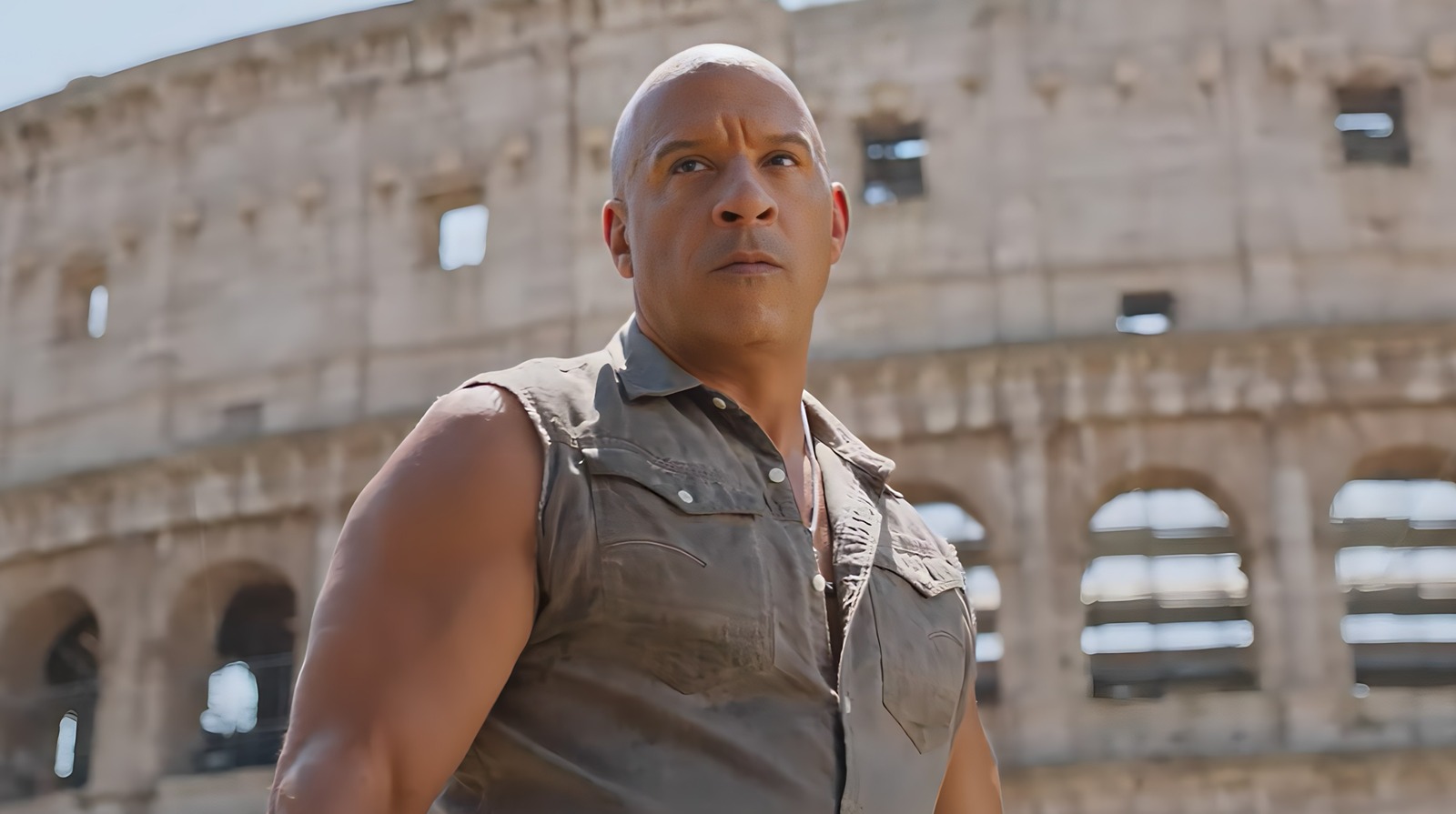
Fast & Furious Spin-Offs Need To Return To The Streets (Or This Franchise Will Run Out Of Gas) – Looper
Nitrous oxide. 10-second cars. Living life a quarter mile at a time. These used to be what the “Fast and Furious” movies were all about. The biggest action set piece you’d get might be three Honda Civics battling a semi-truck, or just a simple drift race. But those days are long past.
Though real-world street racing inspired “The Fast and the Furious” back in 2001, it’s been little more than window dressing over the past decade. Nowadays, it’s the Instagram filter Universal superimposes over the international spy-heist-thriller bonanza that is the modern franchise. We still get brief street racing scenes in (almost) every installment, but they’re hardly relevant to the core plot these days. Rather, they serve as breaks in the real action, opportunities to develop character relationships, or just excuses to put a bunch of scantily clad women and sports cars in the same shot. You know, real classy stuff.
But as the core saga nears its theoretical endpoint — a two-part finale that begins with “Fast X” — it would do well to reflect on its distant past. The franchise is far too valuable for Universal to let it drive off into the sunset. More spin-offs in the style of “Hobbs & Shaw” seem inevitable. But if the studio really wants to keep up the momentum, it needs to take “Fast and Furious” back to the streets where it began.
Street racing is what has always set Fast and Furious apart
 Universal Pictures
Universal Pictures
At some point, every major modern action blockbuster blurs together. The stylistic details are what set them apart. The Avengers have their multiverse, “Jurassic World” has dinosaurs, Tom Cruise has a death wish, and so on and so forth. “Fast and Furious,” of course, has cars.
It’s more than that, though. Even as the actual street racing has diminished, the crew’s history in the scene continues to influence their characters. The movies are fun because Dom (Vin Diesel) and the gang aren’t real spies. They’re still two-bit crooks with a need for speed who just so happen to be fighting global cyberterrorists.
That one street racing scene we get in every mainline “Fast” movie matters. It keeps the characters grounded in a colorful and fantastical world that’s still far more relatable than their commando escapades. And most importantly, street racing remains at the center of the franchise’s family theme. It’s their world: the thing that brought them all together in the first place. It’s the reason Brian (Paul Walker) and Dom go from enemies to brothers. It’s the reason Tej (Ludacris) and Roman (Tyrese Gibson) go to space.
Roman says it best at the end of “Fast & Furious 6” while praying over the Toretto family barbecue. “Father, we give thanks for all the choices we’ve made because that’s what makes us who we are,” he says. “And most of all, thank you for fast cars.”
The Fast and Furious franchise can’t keep amping things up forever
 Universal Pictures
Universal Pictures
Making a bombastic new action movie every two years is no small feat. In addition to organizing the production, managing the stars’ shooting schedules, and all the other logistical details, you have to come up with new, creative set pieces to stick in the trailer and get audiences into theaters.
“Fast and Furious” has done an impressive job at this. Every successive entry has delivered fresh, inventive action sequences that have continued to up the ante for the franchise. There’s the “Furious 7” skyscraper jump, the vault chase in “Fast Five,” the cargo plane battle in “Fast & Furious 6,” and of course, the space mission in “F9: The Fast Saga,” just to name a few. But no matter how many hits the movies have delivered, they can’t keep amping things up forever.
Eventually, the drive for bigger and more explosive action scenes must hit a ceiling. Maybe the producers won’t run out of ideas. But after you put characters through so many different thrill rides, they inevitably start to lose some impact. It’s an inflation of sorts — the more impossible situations Dominic Toretto survives, the less punch each one manages to pack.
For years, “Fast and Furious” has been focused in only one direction: up. But with the main saga wrapping up and multiple characters having broken atmosphere, it might be about time for a left turn.
Without the main Fast crew, we’ll need new storylines
 Universal Pictures
Universal Pictures
Ever since “Fast Five,” every mainline movie in the franchise has been an “Avengers” adventure. It’s an ensemble series with double-digit characters splitting screen time. That’s a big part of the “Fast” appeal, and how it’s able to pull off such gargantuan action sequences time and again. But if Vin Diesel’s claims are true that “Fast X” is the beginning of the end for the saga, then Universal will need to develop new stories beyond the core cast.
“Hobbs & Shaw” was the pilot program for “Fast” spin-offs, and it did quite well at the box office. It also abandoned the series’ street racing origins completely in favor of a full-blown “Mission: Impossible” story. That’s fine, but limiting. There’s so much potential for more unique and original “Fast and Furious” spin-off stories, and if Universal is smart, that’s where they’ll take the series next.
The previous films have already provided plenty of ideas. A buddy comedy where Roman, Ramsey (Nathalie Emmanuel), and Tej open a garage together? A family film about Dom, Letty (Michelle Rodriguez), and Little Brian living it up in Havana? A proper, all-in sequel to “Tokyo Drift?” All of these have massive potential, emotional grounding, and most importantly, a proven model. Take one or two characters from the main series cast and drop them in their own world. Then surround them with a supporting roster of new characters, thereby expanding the “Fast” mythology. After all, “Hobbs & Shaw” isn’t the only “Fast” movie to employ this strategy.
Car culture is still the heart and soul of Fast and Furious
 Universal Pictures
Universal Pictures
The first three movies in the “Fast and Furious” franchise all followed the same basic structure: A new city, a largely new cast, but the same delicious street racing flavor at the center. Brian is the only character to carry over from the first film to “2 Fast 2 Furious,” which introduced fan favorites like Roman and Tej. And “Tokyo Drift” brought in an entirely new cast, anchored by Sung Kang’s incomparable performance as Han.
In those early years, the connective tissue wasn’t one particular character, but car culture as a whole. The films all had different directors, stars, and settings, but their shared DNA is still instantly recognizable. It shows up every time a character pops a hood, or dramatically shifts gears, or delivers some mechanical jargon that may or may not actually mean anything real. If the series wants to continue thriving, its only genre label can’t be “action movie.” It also needs to embrace the street racing aesthetic that first set the films apart.
Returning to the streets would help ground the last decade of absurd storylines. It’s fun to see characters experience wild things and then return to normalcy. It’s rewarding to see how “the bullets,” as Brian calls it in “Furious 7,” changes people. The family theme in “Fast and Furious” has become a meme, but it’s still a big part of why people love the movies. There’s a consistent emotional undercurrent that’s followed the characters from 2001 until now. That core can keep the series strong long after “Fast 11,” even if the action gets toned down.




























































